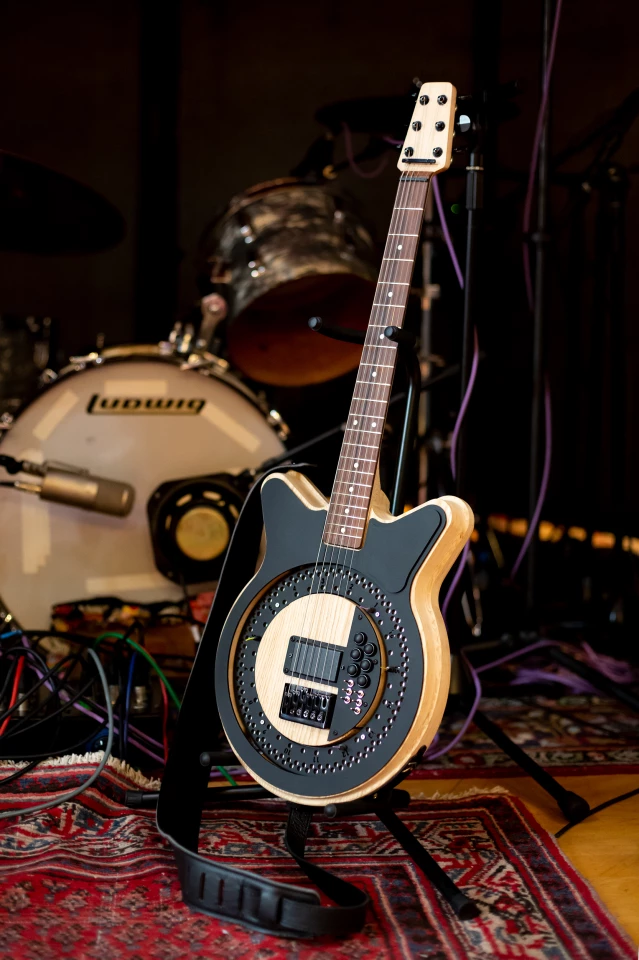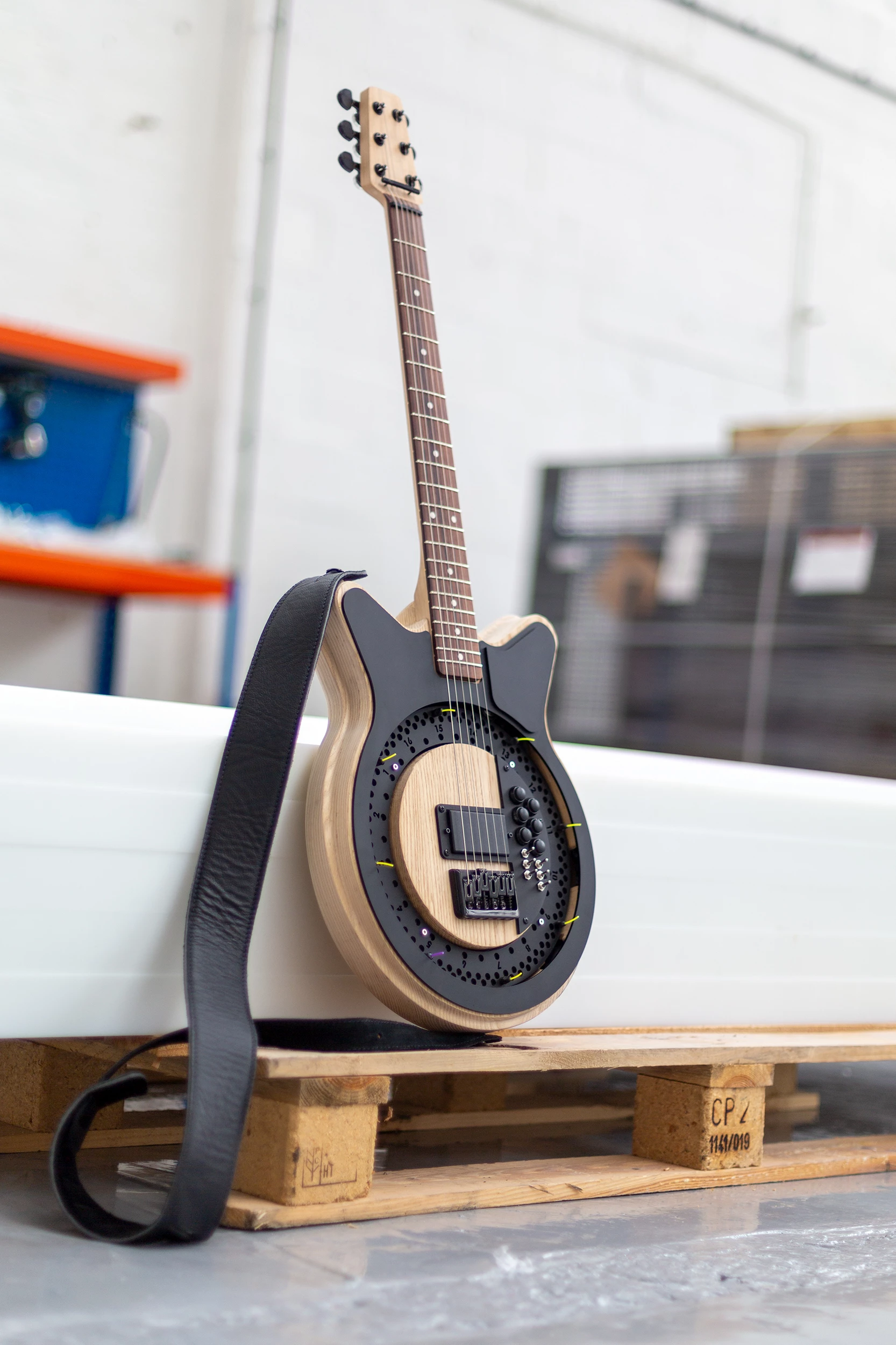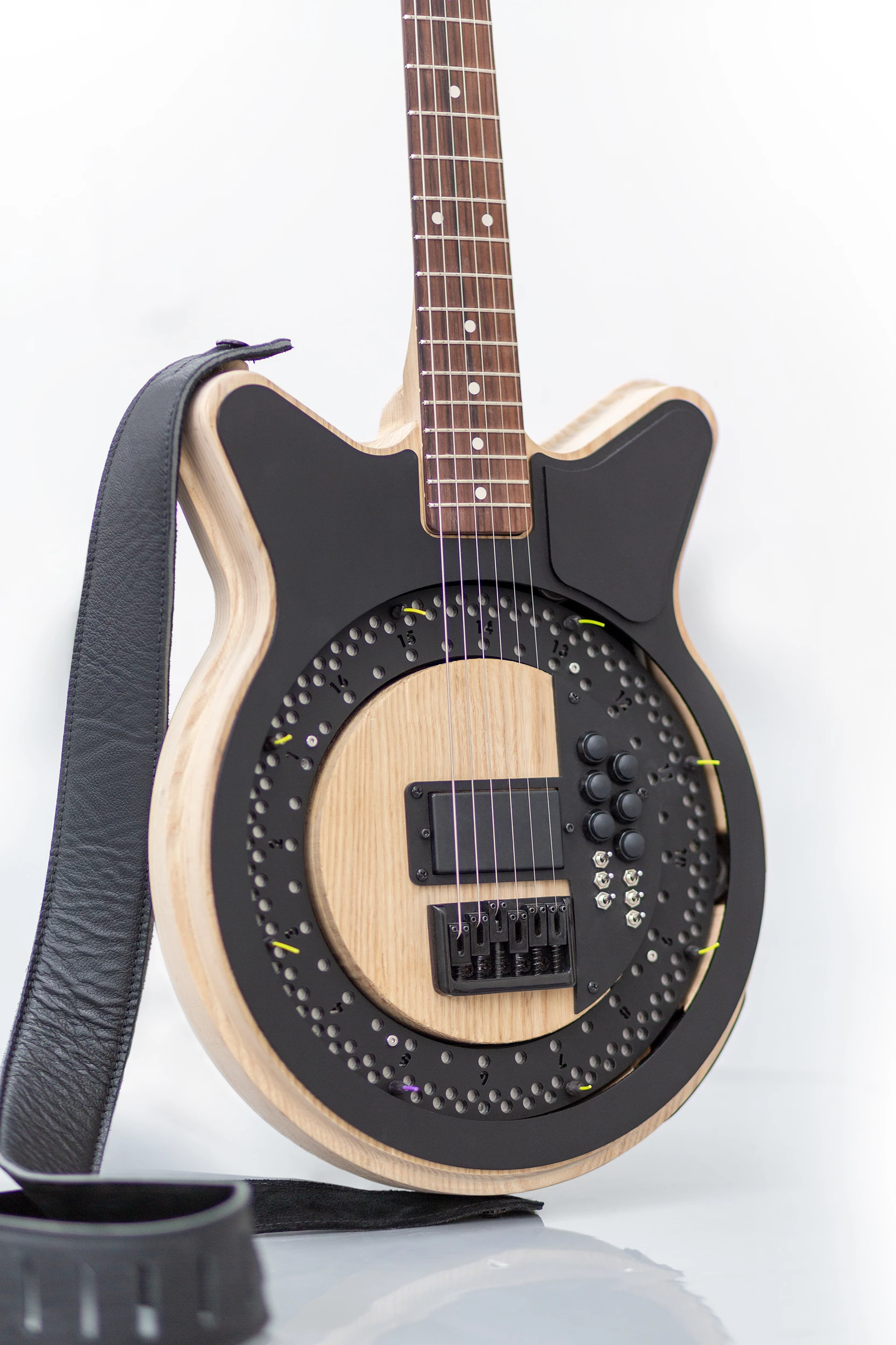Anthony Dickens had an idea for a new kind of guitar for more than 10 years, but work on a prototype only started two years ago. Now with the help of engineers from London's Makerversity, the Circle Guitar is ready to rock.
What makes the Circle Guitar different to other electric six strings is that it's essentially home to a mechanical step sequencer for sounds, textures and rhythms that Dickens says would be impossible on a conventional electric guitar.
The motor-driven spinning disc in the ash body of the guitar rotates at up to 250 beats-per-minute under the strings. This disc has 128 slots for guitar picks to be placed in, and these strike the strings instead of a player's pick hand. The force that the picks strike the strings can be set by the user.
Once the picks are placed in the desired strike pattern and the disc motor engaged, the player uses the picking hand to either mute strings for some heavy riffing or plays the six buttons below the strings like a piano to sound notes or chords. Each string has its own output captured by a hexaphonic pickup, which can then be amplified, recorded or processed through music production software. And six switches determine whether the signal passes freely to an amp, mixer or computer interface, or to the buttons that will release it only when pressed.
"You can pan each string across the mix, blend different effects across the strings or set up rhythmic gates to turn individual strings on and off in time with Circle's set speed," explained Dickens. "The options for audio processing using guitar effects pedals, amplifiers, modular synthesis or digital audio workstations are vast."

The Circle Guitar generates a time code which other instruments can follow, or it can be synchronized with the clock of a digital audio workstation over USB, expanding creative options by, for example, phasing the disc rotation in front of or behind the beat, or engaging a swing motion where the spin slows for a time before speeding up again.
The player's fretting hand is used pretty much like on a standard guitar, forming chord shapes or changing pitch at the frets on the rosewood fingerboard. Individual strings can't be singled out for attention during the spin, all of the strings are struck by the guitar picks attached to the spinning disc, but the player can mute strings at the body or neck if desired.
"The smallest movement from your fingers can create big tonal changes, especially when rhythmically moving fingers back and forth over a few strings to allow them to intermittently play before muting them again," Dickens told us. "Moving your fingers around the strings produces crazy harmonics – moving from tonal to atonal sounds."
All of the mechanical components are contained in a single 3D-printed unit and covered by laser-cut black acrylic. The mounted guitar picks face up and there doesn't appear to be any shielding, so you'd need to be careful where and how you place your pick arm above the spin area or you may inadvertently help to redefine the term shred. Since only the string zone near the pickup needs to be available to the rotating picks, perhaps we'll see some player protection cooked into a future iteration.
"As an instrument, Circle Guitar creates a broad and unrivaled sonic experience that is extremely good fun to play," said Dickens. "It works equally well played live with a band as it does in an electronic music studio surrounded by synthesizers, chains of effects racks and Eurorack modules. The thing that most excites me about the instrument is how will people use it in their music and what kind of music they will create.
"The raw power of amplifying a few plectrums relentlessly striking the strings at 180 bpm with perfect timing is a huge sound, but, together with the ability to slow the circle down, then trigger, modulate and affect individual strings you can create a lush, evolving sound that lightly flutters out of your speakers."
The Circle Guitar is still at the prototype stage of development, though Dickens told us that he has already received his first order. The video below shows it in action.
Source: Anthony Dickens







